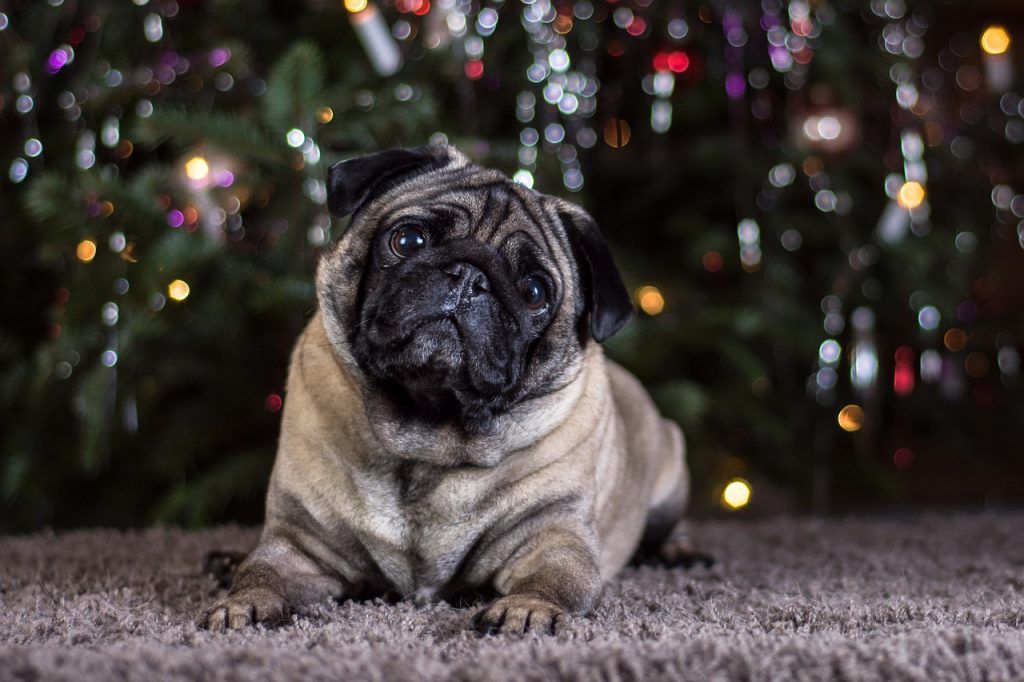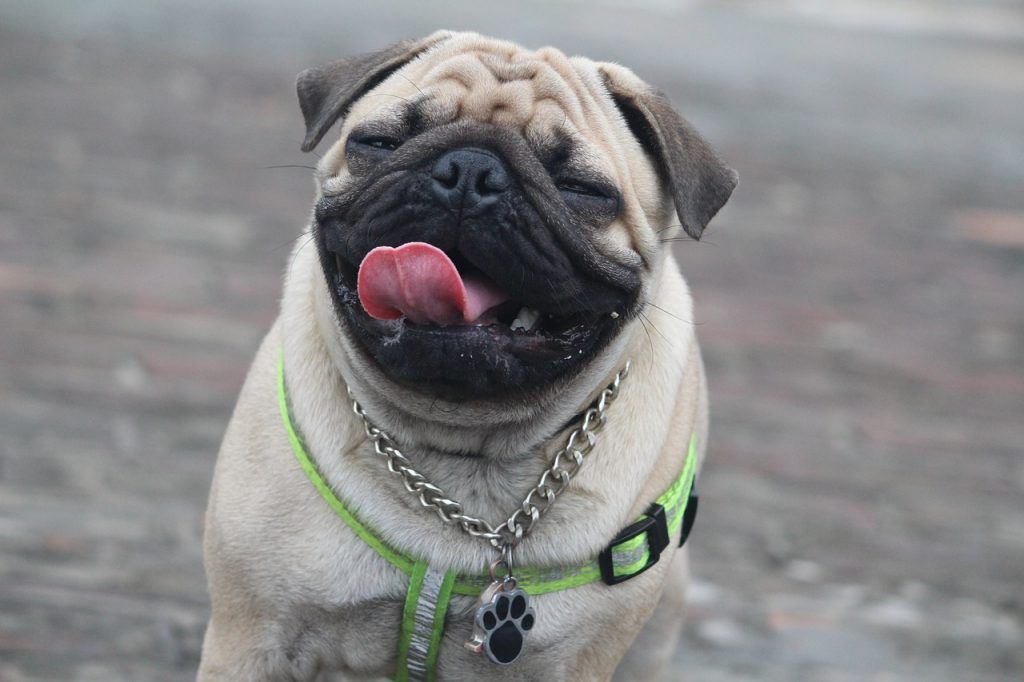Pugs are one of the world’s oldest and most popular dog breeds. They’re known for their short muzzle, wrinkly face, curly tail, and expressive eyes. Pugs are loyal, playful, and affectionate dogs that make great companions for people of all ages. In this article, we’re going to explore this charming breed’s history, characteristics, care, and fun facts.
The History of Pugs
Pugs have a long and rich history that dates back to over 2,000 years ago. Most historians agree that the breed originated in China, where they were bred as companion animals for the wealthy and royal families. Chinese emperors highly valued Pugs, who kept them bathed in luxury and guarded by soldiers. Some pugs even had their own mini palaces and servants. The Chinese breeders also aimed to create a pattern of wrinkles on the pugs’ foreheads that resembled the Chinese character for “prince” (王).
Dutch traders brought pugs from China to Europe in the 16th century. They quickly became popular among the European nobility, especially in Holland and England. Pugs were the official dogs of the House of Orange in Holland after one of them saved the life of Prince William the Silent from an assassination attempt. Pugs were also favored by Queen Victoria of England, who owned many pugs and influenced their breeding standards.
Pugs have also been featured in many famous paintings, sculptures, and literature by artists such as Goya, Hogarth, Reinagle, and Dickens. They have also been associated with some historical figures, such as Napoleon Bonaparte, Josephine Bonaparte, Marie Antoinette, and Jane Austen.
Pugs were recognized by the American Kennel Club (AKC) in 1885 and have been consistently ranked among the top 40 most popular dog breeds in the United States. The Pug Dog Club of America was founded in 1931 and is the national breed club for pugs in the US.
Breed Overview
| Dog Breed | Pug |
|---|---|
| Nicknames | Mops (Germany and Netherlands), Doguillo (Spain), Carlin (France), Mopshond (Holland), Chinese Pug, Dutch Mastiff |
| Coat | Short and glossy |
| Coat Colors | Black, fawn, apricot, or silver |
| Coat Patterns | Black mask and black line on the back for all but the black pugs |
| Weight | 14 to 18 pounds |
| Height | 10 to 13 inches at the withers |
| Lifespan | 12 to 15 years |
| Origin | China |
| Breed Ranking | 35th most popular dog breed in the US according to the AKC |
The Appearance of Pugs
Pugs are small but sturdy dogs with compact and muscular bodies. They stand 10 to 13 inches tall at the withers and weigh 14 to 18 pounds. Their short and glossy coat comes in four colors: black, fawn, apricot, or silver. All but the black pugs have a black mask on their face and a black line on their back.
Pugs have large round heads, flat faces, and short muzzles. Their eyes are dark, round, and prominent, giving them a human-like expression. Their ears are small and drooping, either rose-shaped or button-shaped. Their tail is tightly curled over their hip.
Pugs have a distinctive look that sets them apart from other dog breeds. They have a lot of character and charm in their appearance that reflects their personality. They look like miniature lions with their mane-like coats or teddy bears with cuddly features.

Interesting Myths about Pugs
Pugs are among the most popular and beloved dog breeds in the world, but many myths and misconceptions surround them. Some of these myths are harmless, while others can be harmful or misleading. Here are some of the most common myths about pugs and the truth behind them:
Myth #1: Pugs are dumb and lazy
Pugs are actually very smart and playful dogs, but they can also be stubborn and independent. They have a lot of personality and will of their own, which can make them seem disobedient or uninterested in training. However, with positive reinforcement and patience, pugs can learn many tricks and commands.
Myth #2: Pugs shed only once a year
Pugs actually shed all year round and sometimes more during certain seasons. Their coat is short and glossy but has two layers: an undercoat and a topcoat. The undercoat is dense and soft, while the topcoat is coarse and smooth. The undercoat sheds more than the topcoat, which can create a lot of loose hair around the house. Pugs need weekly brushing to remove the dead hair and keep their coat shiny and healthy.

Myth #3: Pugs’ eyes can pop out at any moment
Pugs have round and prominent eyes that give them a human-like expression, but they also make them more vulnerable to eye injuries and infections. Pugs can suffer from proptosis, which is when the eye pops out of its socket due to trauma or pressure. This is a rare but serious condition that requires immediate veterinary attention. However, it is not true that pugs’ eyes can pop out at any moment or for no reason. It usually happens as a result of an accident or a fight with another animal.
Myth #4: Pugs are always sad
Pugs have a very distinctive facial expression that tends to make them look sad or confused, but this is just their natural appearance. Pugs are actually very happy and cheerful dogs that love to make people laugh with their silly antics. They are friendly, loving, mischievous, and curious dogs that enjoy attention and affection from their owners and other people. They are not depressed or unhappy dogs but rather expressive and charming ones.
Myth #5: Pugs are related to bulldogs.
Pugs are sometimes called “Dutch bulldogs” or “Chinese bulldogs,” but they are not actually related to bulldogs. DNA testing has proven that pugs share their origins with the Pekingese, another ancient Chinese breed that was bred as a companion dog for royalty. Pugs have some similarities with bulldogs, such as their stocky shape, flat face, and wrinkles, but they are different breeds with different histories and characteristics.
The Characteristics of Pugs
Pugs have charming personalities that match their appearance. They’re friendly, loving, mischievous, and curious dogs that love attention and affection. They’re people-oriented dogs that get along well with children, other dogs, and other pets. They’re also adaptable dogs that can live in any environment as long as they have their human companions by their side.
Pugs have a moderate energy level and need regular exercise to stay healthy and happy. They enjoy playing games, chasing balls, and going for walks. However, they shouldn’t be overexercised or exposed to extreme heat or cold, as they’re prone to breathing problems due to their brachycephalic (short-nosed) structure.
Caring for a Pug
Pugs are relatively easy to care for but require some special attention due to their unique features. Here are some tips on how to keep your pug healthy and happy:
Grooming
Pugs shed a lot, so they need weekly brushing to remove loose hair and keep their coat shiny. They also need monthly bathing with a mild shampoo formulated for dogs. Their facial wrinkles need to be cleaned daily with a damp cloth or cotton swab to prevent infection. Their ears need to be checked regularly for wax buildup or signs of infection and cleaned with a dog ear cleaner if needed. Their nails need to be trimmed every few weeks with dog nail clippers or a grinder.
Feeding
Pugs love food and tend to overeat if given the chance. They need high-quality dog food that meets their nutritional needs and keeps them at a healthy weight. The amount of food they need depends on their age, size, activity level, and health condition. You can consult your veterinarian or the dog food label for the recommended feeding amount. You should also avoid giving your pug human food, especially chocolate, grapes, raisins, onions, garlic, and xylitol, as they can be toxic to dogs.
Training
Pugs are intelligent and eager to please dogs but can also be stubborn and independent. They need early and consistent training to learn good manners and obedience. Use positive reinforcement methods, such as praise, treats, and toys, to motivate your pug and make training fun. You should also socialize your pug from a young age to expose them to different people, animals, and situations and help them become well-rounded and confident dogs.
Health
Pugs are generally healthy dogs, but they’re prone to some health problems due to their genetic makeup and physical features. Some of the common health issues that affect pugs are:
- Pug Dog Encephalitis (PDE)
- Keratoconjunctivitis Sicca (KCS) or Dry Eye
- Brachycephalic Airway Syndrome (BAS)
- Patellar Luxation
- Demodectic Mange

Fun Facts about Pugs
Pugs are adorable and lovable dogs and fascinating and quirky creatures. Here are some fun facts about pugs that you may not know:
- The pug’s motto is “multum in parvo,” which means “a lot in a little” in Latin. This reflects the pug’s big personality in a small body.
- The pug’s name comes from the Latin word “pugnus,” which means “fist.” This is because the pug’s face resembles a clenched fist.
- The pug’s tail curl indicates its temperament. A single curl means the pug is lively and friendly, while a double curl means the pug is more reserved and dignified.
- The pug’s snort is a sign of affection. Pugs make snorting noises when they’re happy or excited to see their owners or other people they love.
- The pug’s teeth are unique among dogs. They have an underbite where their lower teeth protrude beyond their upper teeth. This gives them a distinctive grin that adds to their charm.
- The pug’s wrinkles have a purpose. They were originally bred to form symbols on their forehead that represented good luck in Chinese culture.
- The pug’s coat color has a meaning. According to legend, the black pugs were the guardians of the royal family, while the fawn pugs were the companions of the commoners.
Final Thoughts
Pugs are wonderful dogs that can bring joy and happiness to your life but also come with responsibilities and challenges. You should research and consult experts before you decide to get a pug. You should also consider adopting a pug from a reputable rescue organization or shelter instead of buying one from a breeder or pet store. Many pugs in need of loving homes are waiting for you to adopt them.
If you already have a pug or are planning to get one, you should cherish every moment you spend with them. Pugs are loyal and devoted dogs that will love you unconditionally and make you laugh with their antics. They’re not just pets but family members and best friends. Pugs are truly special dogs that deserve your love and respect.
More Dog Breeds
If you’re interested in learning about similar dog breeds, check out:
Or browse all our dog breed articles here!
FAQs
How much do Pugs cost?
The average cost of a pug puppy from a reputable breeder is between $1,000 and $2,000.
Are Pugs hypoallergenic?
No, pugs are not hypoallergenic. In fact, they are one of the worst breeds for people with allergies. Pugs shed a lot and produce a lot of dander, which can trigger allergic reactions in some people. The wrinkles on their face also harbor dust, dirt, and bacteria that can cause skin infections and irritate the eyes and nose. If you are allergic to dogs, you should avoid getting a pug or at least consult with your doctor before getting one.
What were Pugs bred for?
Pugs were bred for one purpose: to be companion dogs for China’s wealthy and royal families. Pugs were not meant to hunt, guard, or work but to be pampered and loved by their owners.
























